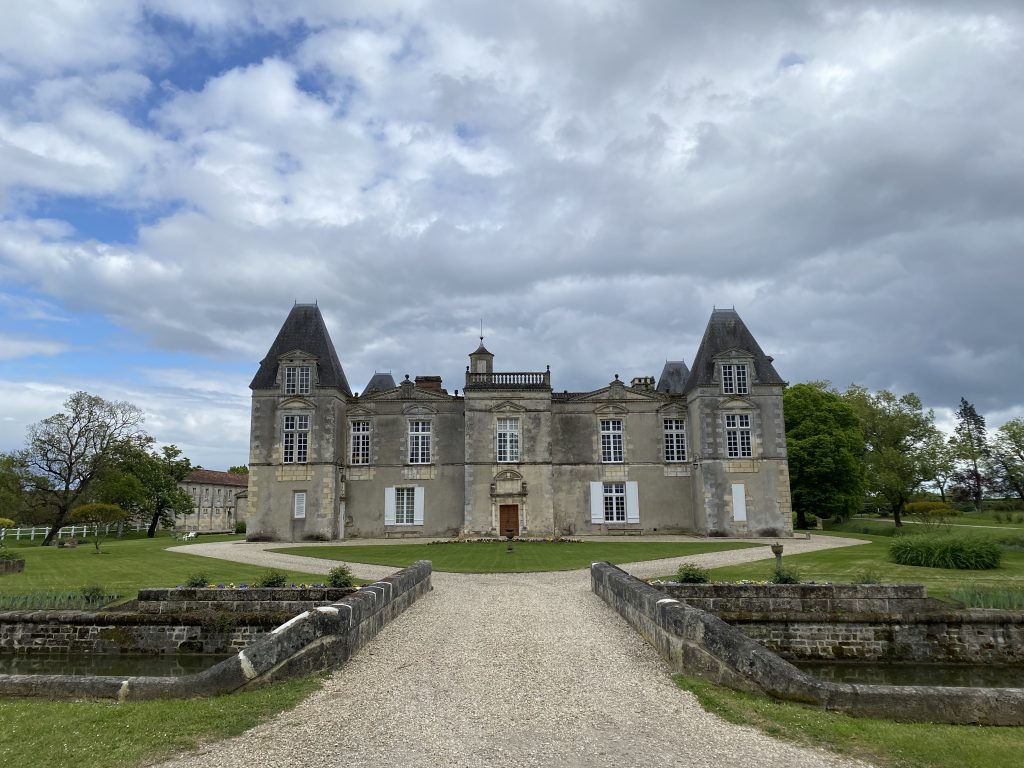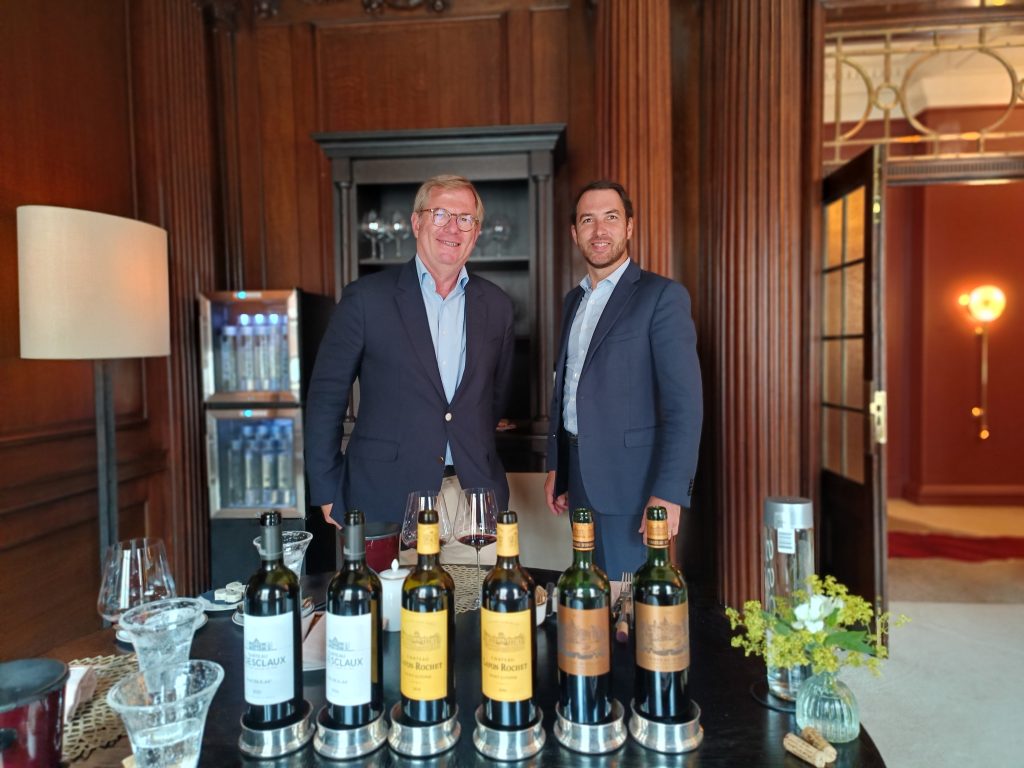This website uses cookies so that we can provide you with the best user experience possible. Cookie information is stored in your browser and performs functions such as recognising you when you return to our website and helping our team to understand which sections of the website you find most interesting and useful.
Château D’Issan: ‘It’s time to anticipate and innovate’
After several years of evolution, Château D’Issan is set to release an “experimental” new white vin de France in September, saying it is “time to anticipate and innovate”. Arabella Mileham talks to the team about the quiet evolution of the estate.

Emmanuel Cruse, director-general of Vignobles Cruse-Lorenzetti (which includes the Margaux châteaux in its portfolio alongside Châteaux Pedesclaux, and Châteaux Lafon-Rochet in Pauillac and Lilian Ladouys in Saint-Estephe) told the drinks business that the aim was not to add another Bordeaux white blend to the mix but to experiment with different grape varieties.
The new wine, which will be made from the 2024 vintage, uses four “very interesting” varieties, Roussanne, Marsan, Viognier and Vermentino. However, it will be labelled as a Vin de France, as the varieties are not approved under the Bordeaux AOC or Bordeaux Supérieure.
The experiment, Cruse said, started during the Covid pandemic and following detailed soil analysis of some of the vineyards. A 1.7 hectare plot of clay and limestone, which lies directly in front of the estate offices, was identified as a site of particularly interest and complex soil. The team decided that rather than planting with Sauvignon Blanc and Semillon, different varieties would be used.
As a result, a quarter of the plot was planted with Roussanne, a quarter with Marsanne, a quarter with Viognier and quarter with Vermentino.
“We are on the 45th parallel and these grapes are growth on the 45th parallel in Piedmont and Croze-Hermitage, so it was a bit experimental, but why not?” Cruse said. “If, after ten vintages, we realise one variety makes a better wine, then we could readapt.”
“It is time to anticipate and innovate.”
He added that even though wines had been made for 900 years at what is now Chateaux d’Issan, records show that wine from the estate, then known as Château Lamothe-Cantenac, was served at the wedding of Henry Plantagenet and Eleanor of Aquitaine in 1152.
“We are still learning, and every year is a new chapter”, he said.
Each year is a new chapter

In addition to the new white varieties, 2020 saw other changes at the estate, with the addition of Cabernet Franc, Petit Verdot and a tiny proportion of Malbec into the blend of the Grand Vin (which until then had been only Cabernet Sauvignon and Merlot), depending on the vagaries of the particular vintage.
“Each vintage has its own personality and its own blend,” Cruse notes, pointing to the difference that the addition of even as little as 1% of Malbec made in the blend.
“During the first tasting sessions, the best was the Malbec, so we used it in the blend,” he explains. “So even if you sometimes have an idea that it’s not the varietal that you’d like to use, if it is the best, you use it. We have used the Malbec for three years in a row —in the ’20, ’21 and ’22. We didn’t in 23, as it didn’t match, it was a little unbalanced, so we didn’t use it in the first wine – but it helps the second wine improve its quality.”
The Petit Verdot comes from a small 7ha vineyard in Margaux neighbouring the estate that the company bought as “a huge investment”, Cruse explains, and the move also involved the inauguration of a small vat house in order to increase the precision — although due to the quality of the terroir, the 74% of the Petit Verdot yield went “straight into the grand vin” in the first year.
“It’s a very small plots of Petit Verdot from 48 (not a clone, the original Peitit Verdot) and we really would like to select those plots, pick and vinify them alone…to keep the identity of the vines,” he said.
“Since then we’ve started to do our own pruning style and massal selection, and we are really getting the full benefit of the new plots that are every year surprising us,” Augustin Lacaille commercial director at Vignobles Cruse-Lorenzetti added.
However, after a busy, investment-heavy few years, it is unsurprising that Cruse-Lorenzetti are “pausing” on acquisition, in order to consolidate, particularly while the economic situation continues to be uncertain.
“When it is a family business and you do lots of investment, you need to breathe a little,” Cruse smiles.
Other portfolio
The group recently finished the transformation of Pauillac fifth growth Château Pédesclaux , which it bought in 2009, renewing the vineyards with increasing plantings of cabernet sauvignon (“the King in Pauillac) , as well as the 45-hectare vineyard of Lafon-Rochet in St Estèphe acquired in 2021. A “clever move” Cruse said, as it neighboured the existing property of Lilian Ladouys.
At Lafon-Rochet, Lorenzetti brought Christophe Congé, who had spend 22 years at Chateaux Lafite Rothschild and the adjacent property Château Duhart Milon, as managing director.
According to Cruse, even in the next vintage, you will be able to see the evolution of the wine, “with more precision and purity of the fruit”.
This largely comes from small gains in the vineyards, better use of soil analysis, and greater precision on when and where to pick, with drones used to analyse the vigour of the vines intra-plots and decide when each plot needs to be picked.
“We are able to reach more optimum maturity of grapes before picking because we are able to react a bit more. It’s a few details, but I think the selection of each plot is really much more precise than it was before,” he said.
The grapes are them vinified in small tanks and aged in 13hl foudres, rather than “the old barrels of Bordeaux” to gain freshness Lacaille said, with blending not taking place too early.
“With global warming and climate change, it is necessary to maintain the balance and freshness in the wines,” he said.
In addition, they have developed the use of cover crops to bring life back to the soil – Lafon-Rochet will be certified organic in 2024.

